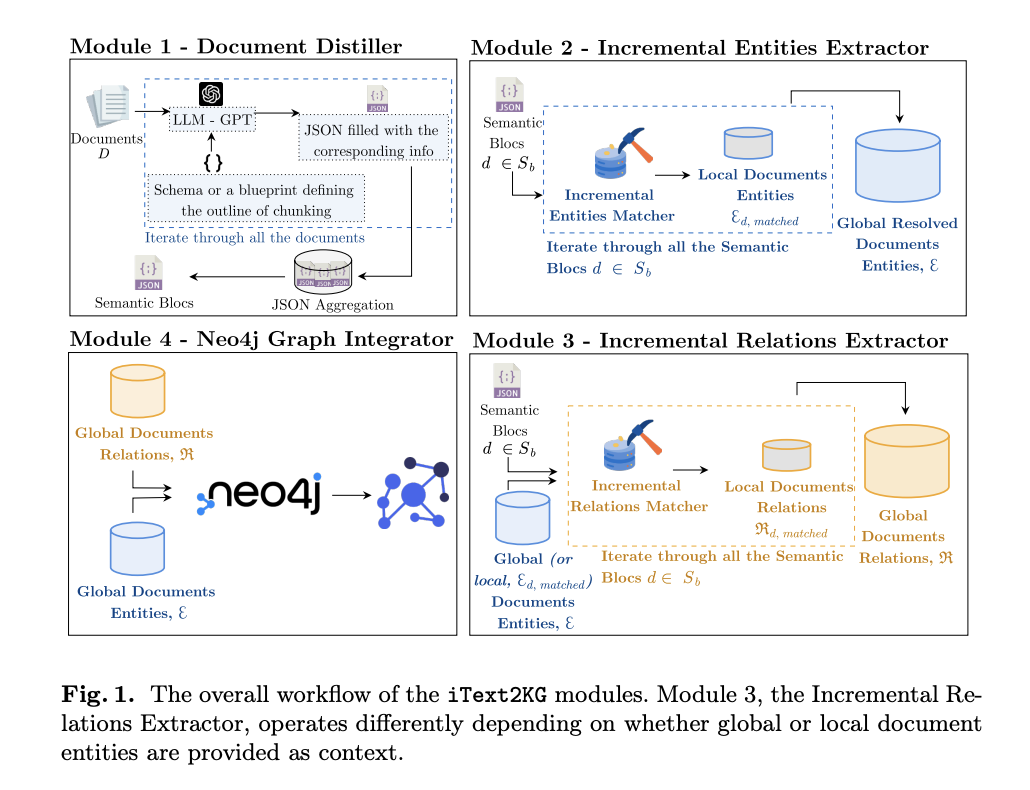
Practical Solutions for Constructing Knowledge Graphs
Challenges in Knowledge Graph Construction
Constructing Knowledge Graphs (KGs) from unstructured data is challenging due to the complexities of extracting and structuring meaningful information from raw text. Unstructured data often contains unresolved or duplicated entities and inconsistent relationships, making it difficult to transform into a coherent knowledge graph. Additionally, the vast amount of unstructured data available across various fields emphasizes the need for scalable methods to automatically process, extract, and structure this data into KGs.
Traditional Methods and Limitations
Traditional methods for building KGs from unstructured text rely on techniques such as named entity recognition, relation extraction, and entity resolution. However, these approaches are often constrained by the need for predefined entity types and relationships, as well as supervised learning, leading to inconsistent graphs with duplicated or unresolved entities. Many existing solutions are also topic-dependent, limiting their applicability across different domains.
iText2KG: Incremental Knowledge Graph Construction
Researchers from INSA Lyon, CNRS, and Universite Claude Bernard Lyon 1 introduce iText2KG, a zero-shot, topic-independent method for incrementally constructing Knowledge Graphs (KGs) from unstructured data without the need for predefined ontologies or post-processing. This framework consists of four distinct modules:
Modular Design and Incremental Processing
iText2KG processes documents incrementally through its four core modules, including Document Distiller, Incremental Entity Extractor, Incremental Relation Extractor, and Graph Integrator. This modular design separates entity and relation extraction tasks, leading to improved precision and consistency. The use of a zero-shot learning paradigm ensures adaptability across various domains without the need for fine-tuning or retraining, making it a flexible, accurate, and scalable solution for KG construction.
Performance and Versatility
iText2KG exhibited superior performance compared to baseline methods, particularly in schema consistency, triplet extraction precision, and entity/relation resolution. The system achieved high consistency in structuring information from various types of documents, such as scientific articles, websites, and CVs. Precision in extracting relevant relationships was notably high when using local entities, ensuring minimal errors in the knowledge graph. Additionally, the approach demonstrated a low false discovery rate in entity and relation resolution, particularly with structured documents like scientific papers.
Advancements and Potential Applications
In conclusion, iText2KG offers a significant advancement in KG construction by providing a flexible, zero-shot approach capable of structuring unstructured data into consistent, topic-independent knowledge graphs. With strong performance across a variety of document types, iText2KG shows immense potential for broad application in fields requiring structured knowledge from unstructured text, offering a reliable, scalable, and efficient solution for KG construction.



























